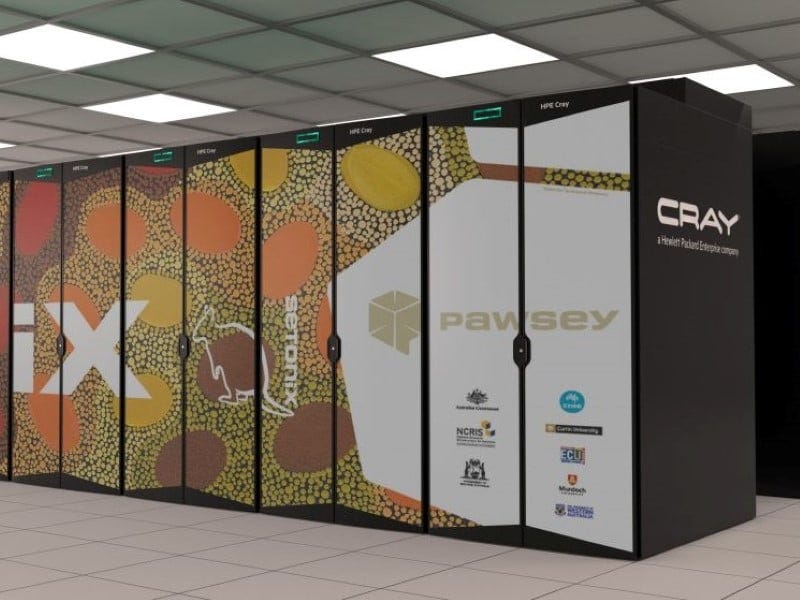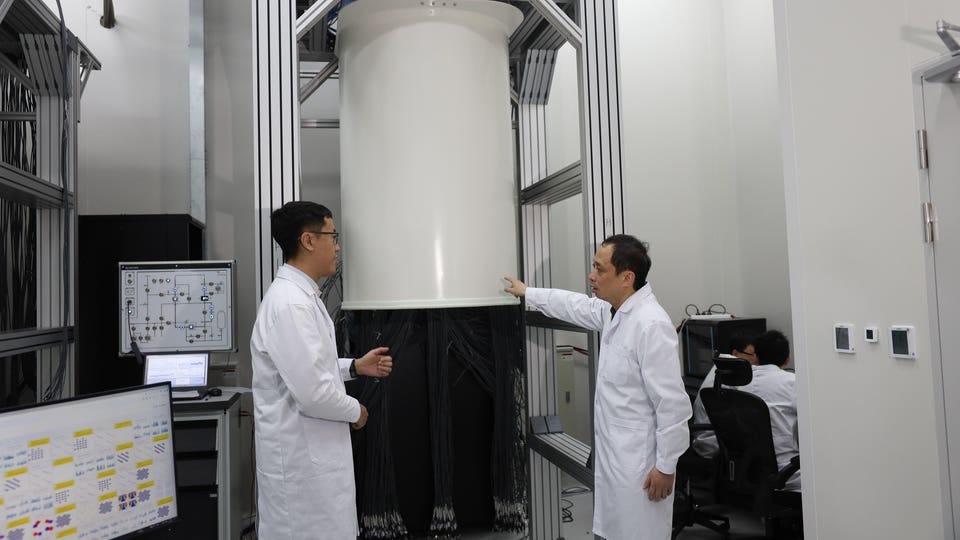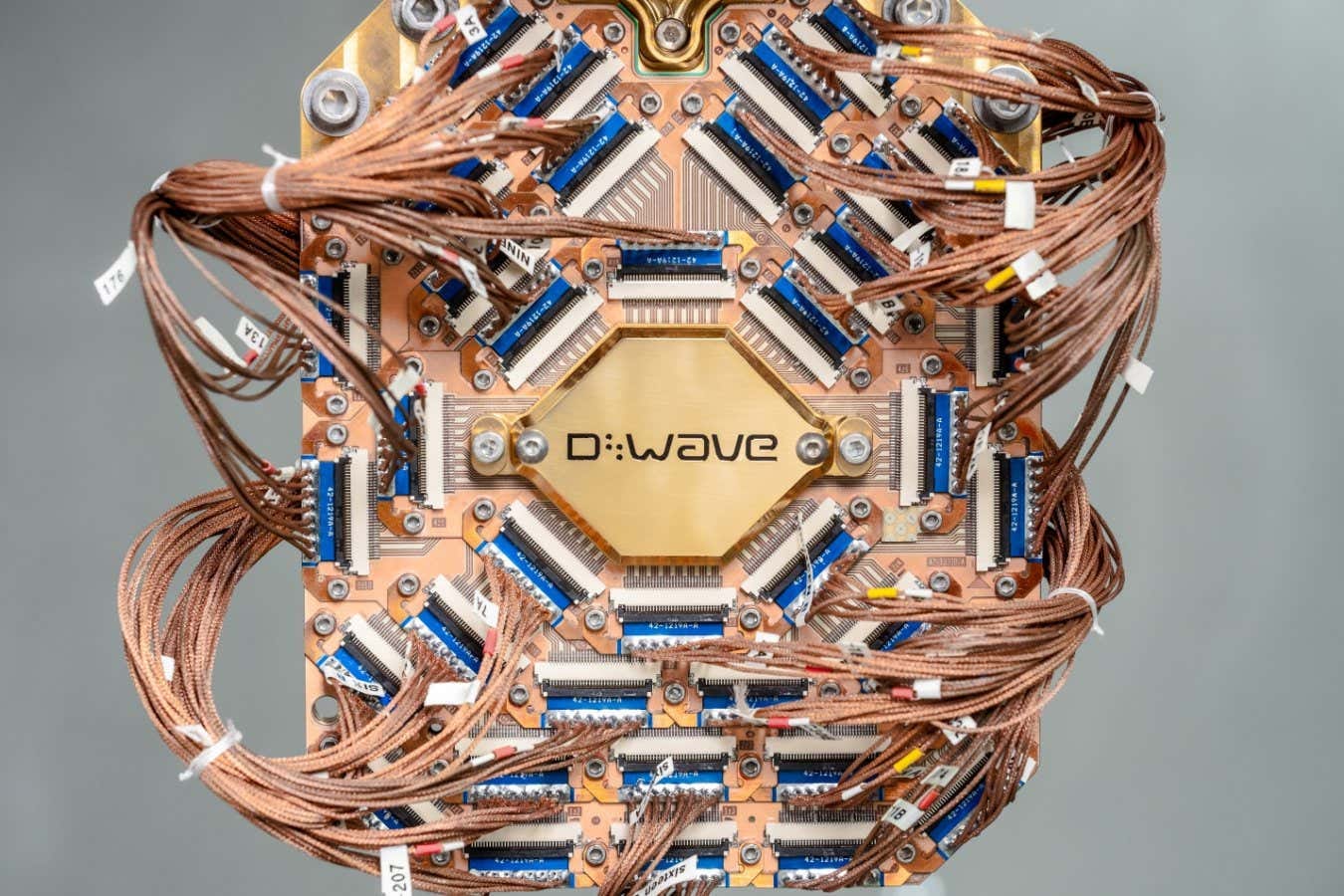The Week in Quantum Computing - March 10th 2025 - DWave claims advantage and the world pushes back. QunaSys, China and more
Issue #226
Quick Recap
This week’s quantum computing highlights start with QunaSys raising 19 million DKK from Innovation Fund Denmark for the HyperTenQ project with the University of Copenhagen and the Novo Nordisk Foundation, as emphasized by CEO Erik Stangerup. The National Institute of Advanced Industrial Science and Technology (AIST) signed an MoU with ORCA Computing to scale photonic quantum devices, while Xanadu partnered with the University of Maryland’s QLab for workforce development and commercialization. On the research front, a new report spotlights bridging classical and quantum frameworks for 1D Navier-Stokes equations, and Ifan Williams (Quantinuum) alongside Mathieu Pellen (Universität Freiburg) demonstrated a universal quantum Monte Carlo integration method for high-energy physics. QoolNet-UPM showcased real-time quantum cryptography at MWC25. Firm-level developments include Quantum Brilliance’s integration with the Pawsey Supercomputing Centre for hybrid HPC, and estimates point to over 100 quantum computers globally among IBM, D-Wave, IonQ, and others. The University of Science and Technology of China’s Zuchongzhi-3 chip, led by Zhu Xiaobo R deliver speedups around 10^15. Is that true?. Lastly D-Wave published claims of advantage in simulation, but the claims have been contested far and wide.
The Week in Quantum Computing
Solving Navier Stokes equations with quantum
In 2025, a new Phys.org report discusses bridging classical and quantum frameworks for solving 1D Navier-Stokes equations. The research underscores how quantum computations might streamline fluid simulation. This synergy is significant for quantum computing, hinting at broader real-world applications beyond cryptography and optimization. While challenges remain in hardware scalability, the promise of diminishing computation time for fluid equations is intriguing. Researchers emphasize the potential to accelerate breakthroughs in fluid dynamics modeling. The findings align with ongoing efforts to merge classical and quantum methods in HPC, foreshadowing more tangible use cases for quantum hardware.
https://phys.org/news/2025-03-classical-quantum-navierstokes-equations-1d.html
QunaSys Secures the Innovation Fund Denmarkâ’s Grant for Quantum Chemistry Breakthroughs
QunaSys has secured 19 million DKK from Innovation Fund Denmark for the four-year HyperTenQ project in 2025, collaborating with the University of Copenhagen and Novo Nordisk Foundation Quantum Computing Programme. Targeting complex molecular modeling in chemistry, HyperTenQ deploys quantum phase estimation and photonic hardware to accelerate drug discovery, materials design, and energy solutions. “HyperTenQ represents an exciting opportunity,” said Erik Stangerup, CEO of QunaSys Europe, highlighting QunaSys’s expertise. “The unique open hardware platform…creates an excellent framework for a significant leap forward,” added Gemma Solomon of the University of Copenhagen. This collaboration underscores the growing importance of quantum innovation in tackling computational challenges once deemed insurmountable.
https://qunasys.com/en/news/posts/hypertenq
MadQCI and QoolNet demostrate quantum safe networks
In 2025, at MWC25, the Universidad Politécnica de Madrid’s QoolNet-UPM, in collaboration with Telefónica, AWS, and Vithas Hospitals, showcased real-time quantum cryptography demonstrations. The QoolNet-UPM team—Juan Pedro Brito, Jesús Ballesta, and Ramón Querol—presented a solution for quantum-safe encryption, ensuring secure medical data in hospital networks. “The integration of this technology in health centers marks a before and after in the protection of medical information,” said Ángel Ayuso, Innovation Director at Vithas. With technology from LuxQuanta, the system harnesses quantum key distribution for robust data protection. Supported by the Comunidad de Madrid and Next Generation EU, these developments reflect Europe’s expanding quantum ecosystem.
Understanding the Role of a Quantum Expert Witness
On February 23, 2023, John Vint, Commercial Director, explained the function of a Quantum Expert Witness in arbitration, stating, “It is important to remember that an expert witness’ role is not to simply apportion blame.” In an ICC arbitration example for a UAE residential project, Vint highlighted typical claims such as rectification costs and project delays. Emphasizing impartiality, he underscored the need to establish credible methodologies when determining financial entitlements. He also recommended integrating expert analysis early to reduce disputes and strengthen contractual positions. This focus on precise cost assessment and record-keeping remains crucial in 2025, especially for complex project evaluations requiring rigorous scrutiny and data-driven clarity.
https://www.pmkconsult.com/news/understanding-the-role-of-a-quantum-expert-witness/
Quantum Brilliance unveils Pawsey research integration
Quantum Brilliance has revealed a new integration with the Pawsey Supercomputing Centre in 2025, aiming to combine high-performance computing with advanced quantum computing capabilities. This collaboration promises faster quantum simulations and more efficient data processing, an important step as organizations worldwide push for breakthroughs enabled by hybrid quantum–classical systems. By linking Pawsey’s powerful infrastructure with Quantum Brilliance’s expertise, researchers can tackle complex computational challenges across diverse fields. In the fast-evolving realm of quantum computing, such synergy highlights the rising importance of scalable, accessible resources and potent research partnerships.
https://www.innovationaus.com/quantum-brilliance-unveils-pawsey-research-integration/
A general approach to quantum integration of cross sections in high-energy physics
Researchers Ifan Williams (Quantinuum) and Mathieu Pellen (Universität Freiburg) present a universal method for quantum integration of cross sections in high-energy physics using Fourier Quantum Monte Carlo Integration in 2025. They achieve “a quadratic speed-up in root mean-squared error convergence with respect to classical Monte Carlo integration,” a critical improvement as the LHC runs collisions at 13.6 TeV. Their approach integrates efficiently with multi-dimensional cross sections, focusing on building blocks like relativistic Breit–Wigner distributions. According to the authors, the technology leverages “Quantinuum’s Quantum Monte Carlo Integration engine” for precision and adaptability. This convergence of quantum algorithms and high-energy physics in 2025 augments theoretical predictions for collider experiments, offering more efficient paths in particle discovery.
https://arxiv.org/html/2502.14647v1
How Many Quantum Computers Are There in the World?
Estimates suggest over 100 quantum computers globally in 2025, although definitions vary. “Quantum supremacy” was demonstrated by Google (2019), while IBM deploys multiple superconducting devices. D-Wave offers quantum annealers, IonQ and Quantinuum operate trapped-ion machines, and PsiQuantum pursues photonic systems. IQM expands on-premise superconducting hardware, claiming up to 30 installations. Each approach exemplifies the complexity of counting machines across labs, cloud access, and covert national projects. The push toward higher qubit counts and better error correction underscores a crucial race to achieve practical quantum advantage in scientific and industrial domains.
https://quantumzeitgeist.com/how-many-quantum-computers-are-there/
AIST and ORCA Computing Strengthen Collaboration for the Industrialization of Scalable Photonic Quantum Computing through MOU Signing
In 2025, the National Institute of Advanced Industrial Science and Technology (AIST) and ORCA Computing signed an MoU to industrialize scalable photonic quantum computing. By uniting AIST’s Global Research and Development Center for Business by Quantum-AI Technology (G-QuAT) with ORCA’s photonic quantum expertise, they aim to address system engineering, reliability, and hybrid quantum-classical optimization. David Hall, DPhil, serves as Head of Delivery, while Prof. Ian Walmsley, recognized for developing the SPIDER technique for ultra-fast laser pulses, chairs ORCA’s board. This collaboration focuses on RAS characterization and hardware integration, propelling photonic quantum technology from research to large-scale deployment and fueling next-generation computations in a rapidly evolving quantum landscape.
https://orcacomputing.com/aist-orca-computing-photonic-quantum-mou/
Quantum Singularity Ahead? China’s Zuchongzhi-3 Reshapes Quantum Race
Zhu Xiaobo R and colleagues at the University of Science and Technology of China unveiled Zuchongzhi-3, a 105-qubit superconducting chip reportedly 10^15 times faster than top classical supercomputers. Their 83-qubit, 32-cycle random circuit experiment overtook classical systems by 15 orders of magnitude. Google, which first claimed "quantum supremacy" in 2019, now matches Zuchongzhi-3 with its 105-qubit Willow, focusing on error correction “allowing it to perform computations in under five minutes that would theoretically take classical supercomputers approximately 10 septillion years.” Microsoft’s Majorana 1 uses topological qubits for potential million-qubit scaling. Skeptics warn “it is still decades away” from broad practical use, but these achievements in 2025 highlight a bold stride toward fault-tolerant quantum processing.
Quantum Computing Firm Xanadu Joins National Quantum Laboratory at UMD
Quantum computing firm Xanadu has partnered with the University of Maryland’s QLab in a three-year agreement that will drive innovation, workforce development, and commercialization. “UMD is committed to maintaining its leadership as a global hub for education, research, and innovation,” stated QLab Fellow Norbert Linke. Xanadu, one of only three organizations to demonstrate quantum computational advantage, will offer access to its PennyLane software and photonic quantum technologies. “Xanadu’s mission to deliver useful and accessible quantum computers aligns seamlessly with UMD’s educational and research goals,” said CEO Christian Weedbrook. With UMD’s 35-plus years in quantum information science, this collaboration will accelerate breakthroughs for students, researchers, and startups, underscoring a pivotal stride in quantum computing’s growth for 2025.
https://umdrightnow.umd.edu/quantum-computing-firm-xanadu-joins-national-quantum-laboratory-at-umd
Alice & Bob improve cat qubit error rates with ‘squeezing’ technique
In 2025, French quantum computing startup Alice & Bob SAS reveals a major leap in cat qubit stability via a “squeezing” technique, achieving 160 times fewer bit-flip errors. By compressing the quantum state, cat qubits avoid extra photon injection, minimizing phase-flip errors and boosting performance. “The goal with squeezing is to make every photon count,” says senior researcher Anil Murani. Co-founder and CTO Raphael Lescanne highlights that this method improves qubit performance “without modifying circuit design,” driving more stable quantum operations. Their demonstration saw bit-flip lifetime jumping to 22 seconds at 4.1 photons, extending reliability. Such progress marks a key step toward universal fault-tolerant quantum computing, promising greater efficiency in chemistry, materials science, and beyond.
https://siliconangle.com/2025/03/11/alice-bob-improve-cat-qubit-error-rates-squeezing-technique/
The Paper: Enhancing dissipative cat qubit protection by squeezing
Alice and Bob reports “a steep reduction in bit-flip error rates” with bit-flip times up to 22 seconds and a scaling exponent of 4.3. The “squeezing” approach preserves cat qubits’ gate bias, achieving a 160-fold better bit-flip time compared to a standard cat. They used two-photon stabilization and an average photon number of 4.1. Support from the Simons Foundation and member institutions underscores the collaborative drive toward more robust quantum processors. The paper also cites a “two-fold reduction in Z-gate infidelity,” suggesting significantly improved fault tolerance. This 2025 milestone underscores an important stride in making cat-based architectures more viable for fault-tolerant quantum computing.
https://arxiv.org/abs/2502.07892v2
NIST Selects HQC as Fifth Algorithm for Post-Quantum Encryption
NIST, in 2025, selected HQC as a new post-quantum encryption algorithm, augmenting last year’s ML-KEM-based FIPS 203 standard. Dustin Moody, head of NIST’s Post-Quantum Cryptography project, said, “We are announcing the selection of HQC because we want to have a backup standard that is based on a different math approach than ML-KEM.” HQC relies on error-correcting codes rather than structured lattices, providing a diversified defense if vulnerabilities arise. A draft HQC standard is planned for release next year, with finalization anticipated in 2027. Organizations have already begun integrating quantum-ready solutions, signaling the growing urgency for resilient encryption as quantum computing rapidly advances.
Improve quantum workload performance with Q-CTRL’s Fire Opal error suppression for IonQ processors on Amazon Braket
Zia Mohammad (AWS), Rowen Wu (Q-CTRL), and Tim Rogers (IonQ) introduced Q-CTRL’s Fire Opal error suppression on IonQ’s QPUs via Amazon Braket. Benchmarks show up to 2.43× better fidelity at 30 qubits for deeper circuits on IonQ Forte, demonstrating viability for algorithms like Bernstein-Vazirani, QFT, and QPE. This synergy could accelerate quantum workloads while addressing errors at the gate and circuit levels. By integrating Fire Opal’s pipeline with IonQ’s hardware, users can now drive more accurate results with minimal overhead. IonQ’s existing debiasing complements Fire Opal’s techniques, hinting at broader error-reduction strategies. Q-CTRL will expand these capabilities with dynamical decoupling and AI-driven gate optimization, reflecting ongoing refinements in practical quantum error handling by 2025.
Preparing the next generation of US physicists for a quantum future
In 2025, quantum technologies are flourishing. Tushna Commissariat highlights efforts in the US to cultivate a skilled, diverse quantum workforce. The National Q-12 Education Partnership, led by Emily Edwards of Duke University, targets students from K-12 to early undergraduate, providing tools that address “many different learners at different stages.” Industry investment reached $42bn in 2023, projected to grow to $106bn by 2040. Claudia Fracchiolla at the American Physical Society (APS) reinforces the initiative by engaging teachers, students, and professionals through APS programs such as Quantum To-Go. “There are a lot of layers to what has to be done in quantum education,” Edwards notes, underscoring the urgent need for inclusive strategies that fuel quantum innovation.
https://physicsworld.com/preparing-the-next-generation-of-us-physicists-for-a-quantum-future/
Paper: Challenging D-Wave's Quantum Advantage Frontier with Large-Scale Classical Simulations of Annealing Dynamics
Linda Mauron and Giuseppe Carleo highlight that classical time-dependent variational Monte Carlo (t-VMC) can rival quantum annealing benchmarks set by D-Wave. Their “physically motivated Jastrow-Feenberg wave function” handles spin-glass simulations up to 128 spins with correlation errors below 7%. “Our approach achieves accuracy comparable to that of quantum processing units while requiring only polynomially scaling computational resources,” they write. By surpassing previous computational limits, this work in 2025 reshapes the quantum advantage frontier and challenges assumptions about entanglement constraints on classical simulations, reinforcing that classical methods remain competitive in quantum research.
https://arxiv.org/abs/2503.08247v1
Doubts cast over D-Wave's claim of quantum computer supremacy
D-Wave’s Advantage system claims quantum supremacy in 2025 by tackling quantum Ising model problems, yet Dries Sels at New York University solved similar tasks on a normal laptop in two hours. “They didn’t do all the problems… not something that refutes our supremacy claim,” says Andrew King at D-Wave. Linda Mauron and Giuseppe Carleo at EPFL demonstrated minimal entanglement computations on standard hardware, finishing in days what D-Wave insists would take centuries on a supercomputer. “If you say, ‘this is beyond classical simulation,’ then there will be a classical simulation that will do it,” says Carleo. These developments underscore the vital scrutiny surrounding quantum supremacy claims as the field rapidly evolves in 2025.
Decoding Quantum Hype: What Google, Microsoft, and AWS Are Really Announcing
Carmen Recio wrote: “The delay in getting commercial value on real-world applications from quantum computing can be attributed to one overarching fact, the hardware is not ready yet.” Google Quantum AI’s “Willow” chip scales faster, halving errors and performing computations that would take a supercomputer 10 septillion years. Microsoft’s “Majorana 1,” introduced Feb 19, offers topological qubits, though skepticism remains after a previous retraction. AWS’s “Ocelot” aims to cut quantum error-correction costs by 90%, promising smaller, more reliable devices. These breakthroughs highlight the ongoing race to achieve stable qubits, heralding possible leaps in industrial-scale problem-solving this year.
https://www.finos.org/blog/decoding-quantum-hype-what-google-microsoft-aws-are-really-announcing
An operating system for executing applications on quantum network nodes
In 2025, C. Delle Donne, M. Iuliano, and colleagues introduced QNodeOS, an operating system to execute quantum network applications on NV-based and 40Ca+ ion platforms. Published in Nature on 12 March 2025, it reached 11k accesses and 191 Altmetric mentions. “Our architecture lays the groundwork for computer science research in quantum network programming,” said S. Wehner. By enabling hardware-agnostic, high-level programming, QNodeOS supports crucial functionalities like delegated computation and multitasking. This breakthrough addresses interactive classical-quantum execution and maximizes quantum network hardware usage for future secure cloud computing. Researchers demonstrated it on two nodes featuring diamond-based quantum processors, showing interoperability across distinct platforms, powering expanded research and real-world applications in quantum communication.
https://www.nature.com/articles/s41586-025-08704-w
Israeli startup QuamCore claims breakthrough in scaling quantum computers
Israeli startup QuamCore unveiled a scalable quantum processor design aiming for one million qubits by integrating control systems into cryogenic chambers. “We founded the company with a single goal: solving the scaling problem,” CEO Alon Cohen said. The company’s approach lowers computing costs, reduces power consumption, and addresses critical error issues, potentially surpassing Google’s 105-qubit Willow processor and IBM’s 1,000-qubit plans. Their $9M seed round, led by Viola Ventures, also involves the Israel Innovation Authority. CTO Prof. Shai Hacohen-Gourgy and Chief Scientist Prof. Serge Rosenblum bring extensive research credentials from the Technion and Weizmann Institute. Cohen’s statement, “We’ve found a way to overcome the main bottleneck,” signals a pivotal stride in 2025 quantum development.
https://www.ynetnews.com/business/article/sjmeah121g
Unlocking the Power of Quantum Navigation: Lockheed Martin and Partners Awarded Contract
Lockheed Martin, Q-CTRL, and AOSense collaborate on QuINS, a quantum-enabled Inertial Navigation System funded by the DoD’s Innovation Unit in 2025. This system uses quantum sensors to deliver precise navigation without GPS. Dr. Valerie Browning, Lockheed Martin Vice President of Research & Technology, said, “Our investments in quantum sensing help us stay ahead of future challenges.” Q-CTRL’s CEO Prof. Michael J. Biercuk emphasized the potential to “transition innovative technologies from science to capability.” The initiative pushes quantum computing closer to real-world defense applications, underscoring significant strides in secure navigation. As quantum computing matures, such advancements highlight the industry’s growing capacity to address critical defense needs.
SEALSQ Expands Its Quantum-Safe Strategy with SEALQUANTUM.com Initiative and a Up To $20 Million Investments in Quantum & AI Startups
SEALSQ (NASDAQ: LAES) has launched SEALQUANTUM.com in 2025, committing up to $20 million to quantum and AI startups. Investments announced include quantum computing firm ColibriTD, focusing on bridging classical and quantum platforms, and advanced negotiations with France-based ASIC specialist IC’ALPS. The initiative aligns with European tech founders seeking to strengthen regional capabilities in post-quantum cybersecurity and AI-driven semiconductors. This strategic push aims to safeguard critical infrastructure and bolster Europe’s readiness against emerging quantum threats. Given the accelerating race to deliver real-world quantum solutions, investing in integrated quantum-as-a-service and advanced chip technologies underscores Europe’s heightened interest in cryptographic agility and secure digital landscapes.
https://finance.yahoo.com/news/sealsq-expands-quantum-safe-strategy-132500664.html







